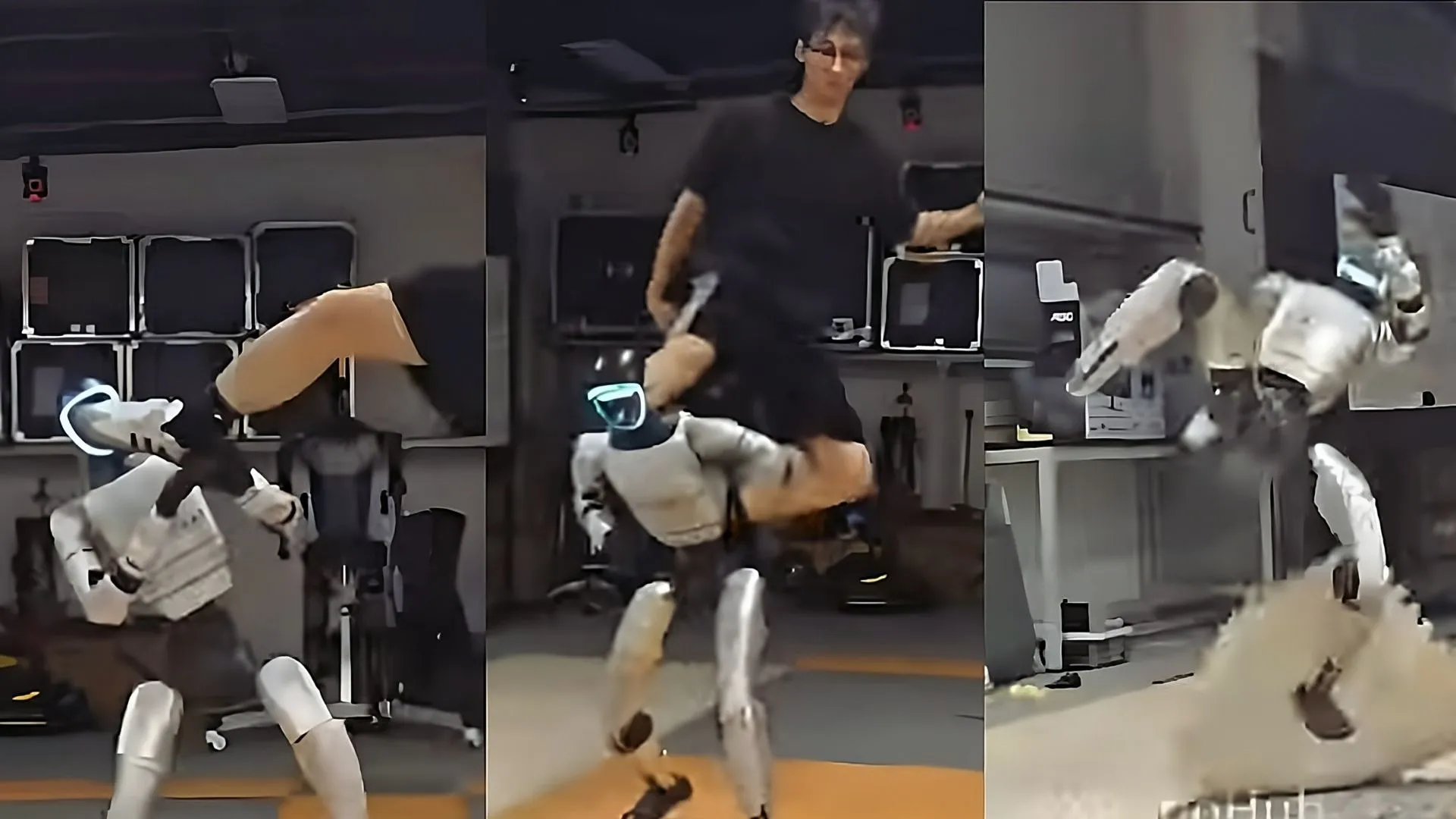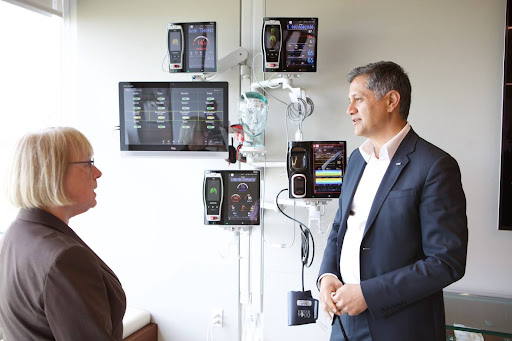
A video that surfaced on YouTube has drawn attention for its unusual, or rather unusually violent demonstration of Unitree’s G1 humanoid robot.
In this video the humanoid robot is shown undergoing what the uploader called a “violence test.” In the clip, a demonstrator repeatedly kicks the robot to test its balance, coordination, and durability, an approach that may look harsh, but is a common method among manufacturers and roboticists to evaluate stability and resilience.
In the opening seconds, the G1, known for its lightweight frame and flexibility, is seen kicking the air while apparently under remote control.
Just moments later, the robot slips on a carpet and collapses to the ground, only to spring back upright in less than a second. That quick recovery is a certified “WHAT?” moment. Notably, this is the only fall the robot suffers throughout the video, and even then it appears to be caused by the surface beneath its feet rather than the kicks themselves.
Robot resilience under pressure
Over the course of the short video, the demonstrator kicks the robot roughly nine times. The blows come from front, back, and the demonstrator doesn’t seem to hold back even. Despite the repeated shoves, the G1 manages to keep its balance and posture, occasionally swaying or losing footing but quickly regaining control.
The video’s comment section is filled with sarcasm. One user wrote, “When the AI overlords come that guy is the first to go,” while another warned, “Remember kids, one day these robots will be watching these videos too.” The robot’s punching and kicking motions, which often seemed directed away from the demonstrator. As one noted, “All it needs is a target tracking system, he’s finished.”
Despite a number of agile martial arts demonstration videos, G1 itself is not designed for combat but for affordability and accessibility in research and light industrial work. Its small size and AI-powered mobility give it versatility, while the test demonstrated how it can withstand sudden impacts and still function effectively.
Technology behind the G1
The Unitree G1 is equipped with low-inertia, high-speed Permanent Magnet Synchronous Motors (PMSM) across its joints, paired with a dual encoder system that delivers precise feedback. This setup allows the robot to make micro-adjustments in real time to maintain balance under stress.
Its movements are governed by a whole-body control framework, which coordinates all joints simultaneously as one dynamic system rather than operating each individually. For spatial awareness, the G1 relies on 3D LiDAR, depth cameras, and an Inertial Measurement Unit (IMU) on its torso.
Together, these inputs constantly update the robot’s internal model of its environment and physical state, helping it react quickly to external forces, such as those delivered in the demonstration. Unitree has also advanced in applying AI through imitation and reinforcement learning.
The G1 can observe human actions, whether martial arts or dance, and use its “world model” to replicate and refine those movements. This training approach enables the robot to perform with agility despite its compact design.
The viral video fits into a long tradition of balance and durability demonstrations in robotics, where engineers intentionally shove or destabilize machines to showcase their recovery systems. For Unitree, the G1 represents an attempt to rival the achievements of Boston Dynamics’ Atlas, long considered the benchmark for agile, dynamic humanoid robots.



